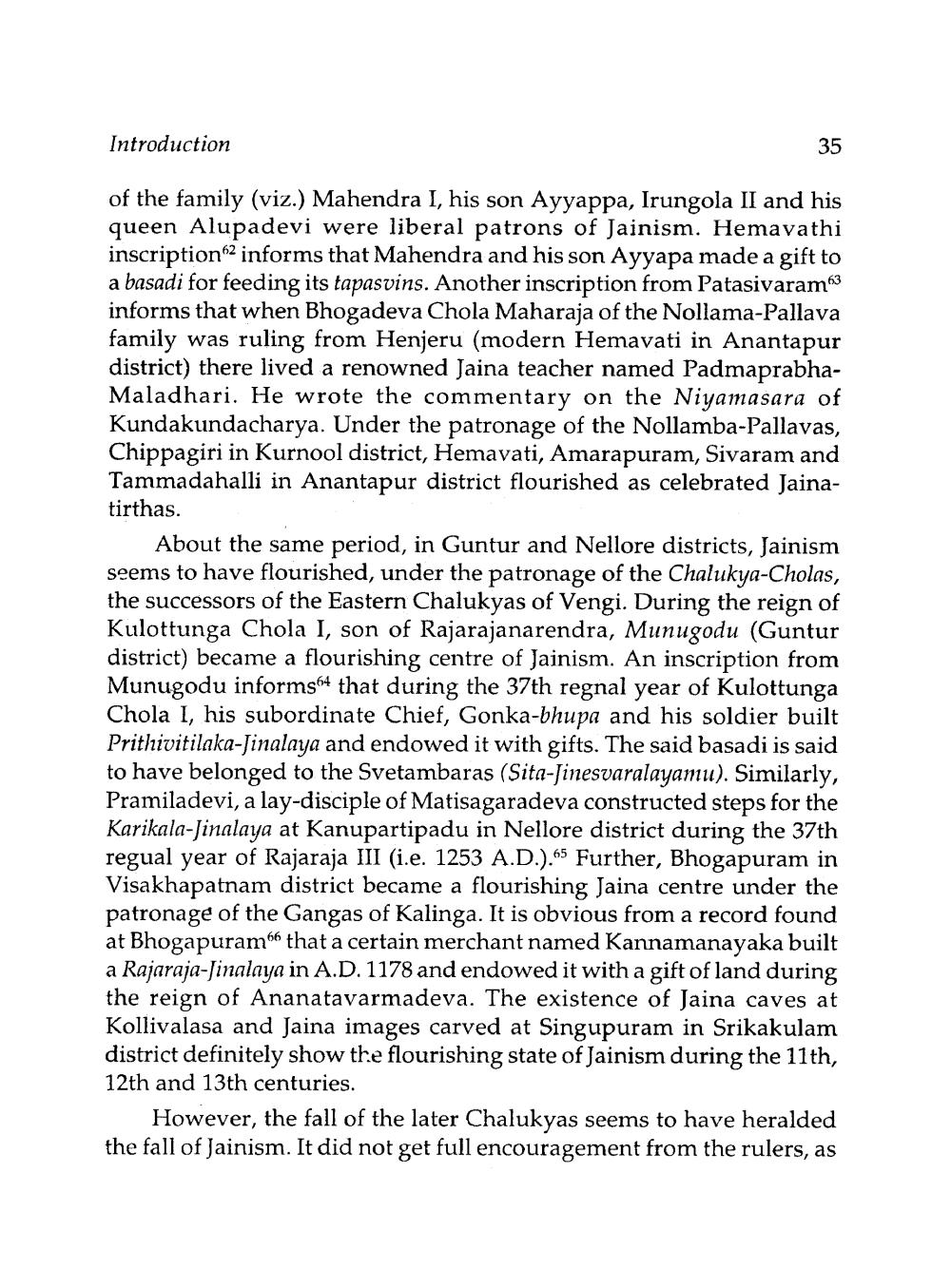________________
Introduction
35
of the family (viz.) Mahendra I, his son Ayyappa, Irungola II and his queen Alupadevi were liberal patrons of Jainism. Hemavathi inscription"2 informs that Mahendra and his son Ayyapa made a gift to a basadi for feeding its tapasvins. Another inscription from Patasivaram63
rms that when Bhogadeva Chola Maharaja of the Nollama-Pallava family was ruling from Henjeru (modern Hemavati in Anantapur district) there lived a renowned Jaina teacher named PadmaprabhaMaladhari. He wrote the commentary on the Niyamasara of Kundakundacharya. Under the patronage of the Nollamba-Pallavas, Chippagiri in Kurnool district, Hemavati, Amarapuram, Sivaram and Tammadahalli in Anantapur district flourished as celebrated Jainatirthas.
About the same period, in Guntur and Nellore districts, Jainism seems to have flourished, under the patronage of the Chalukya-Cholas, the successors of the Eastern Chalukyas of Vengi. During the reign of Kulottunga Chola I, son of Rajarajanarendra, Munugodu (Guntur district) became a flourishing centre of Jainism. An inscription from Munugodu informs64 that during the 37th regnal year of Kulottunga Chola I, his subordinate Chief, Gonka-bhupa and his soldier built Prithivitilnka-Jinalaya and endowed it with gifts. The said basadi is said to have belonged to the Svetambaras (Sita-Jinesvaralayamu). Similarly, Pramiladevi, a lay-disciple of Matisagaradeva constructed steps for the Karikala-Jinalaya at Kanupartipadu in Nellore district during the 37th regual year of Rajaraja III (i.e. 1253 A.D.).45 Further, Bhogapuram in Visakhapatnam district became a flourishing Jaina centre under the patronage of the Gangas of Kalinga. It is obvious from a record found at Bhogapuram that a certain merchant named Kannamanayaka built a Rajaraja-Jinalaya in A.D. 1178 and endowed it with a gift of land during the reign of Ananatavarmadeva. The existence of Jaina caves at Kollivalasa and Jaina images carved at Singupuram in Srikakulam district definitely show the flourishing state of Jainism during the 11th 12th and 13th centuries.
However, the fall of the later Chalukyas seems to have heralded the fall of Jainism. It did not get full encouragement from the rulers, as




